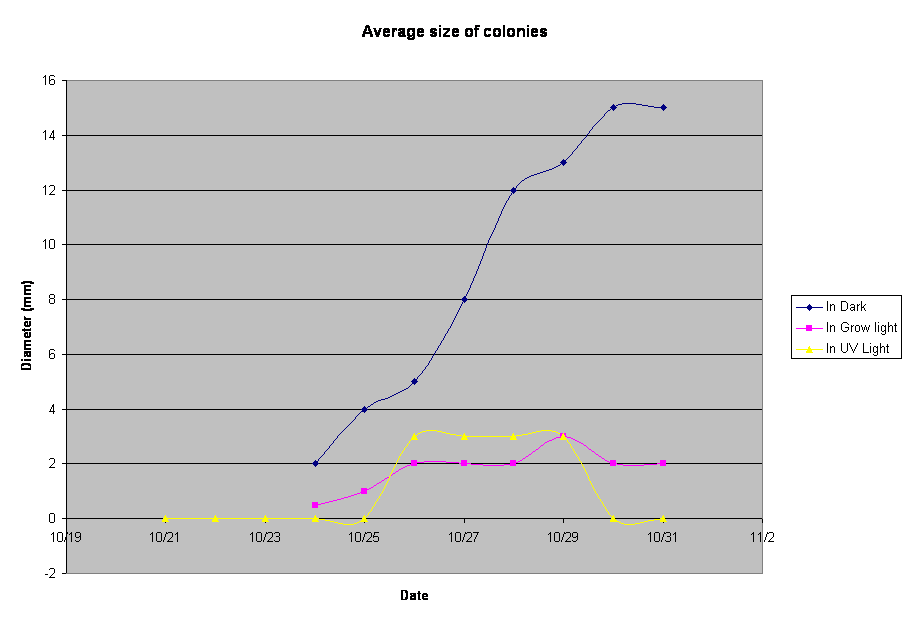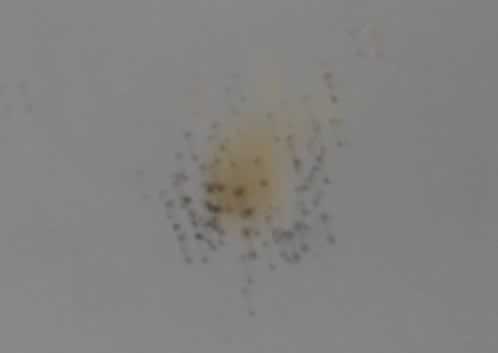Research Question:
How is the growth of mold affected by the presence of ultra violet light?
The goggle sanitizing cabinets in science labs are supposed to destroy biological contaminants by exposure to ultra violet radiation. My question was intended to see if these cabinets really work.

Standards addressed:
Ecology
- Stability in an ecosystem is a balance between competing effects. As a basis for understanding this concept:
- Students know biodiversity is the sum total of different kinds of organisms and is affected by alterations of habitats.
- Students know how to analyze changes in an ecosystem resulting from changes in climate, human activity, introduction of nonnative species, or changes in population size.
- Students know how fluctuations in population size in an ecosystem are determined by the relative rates of birth, immigration, emigration, and death.




